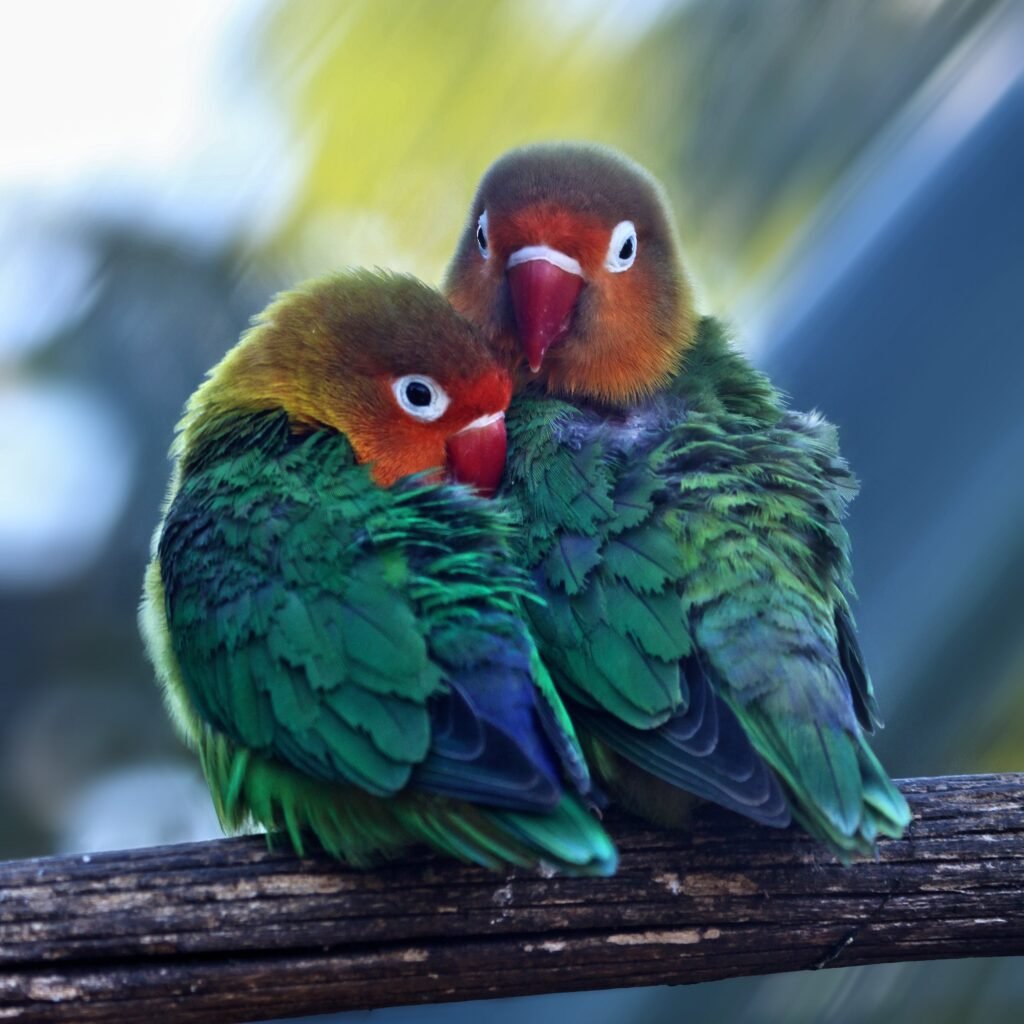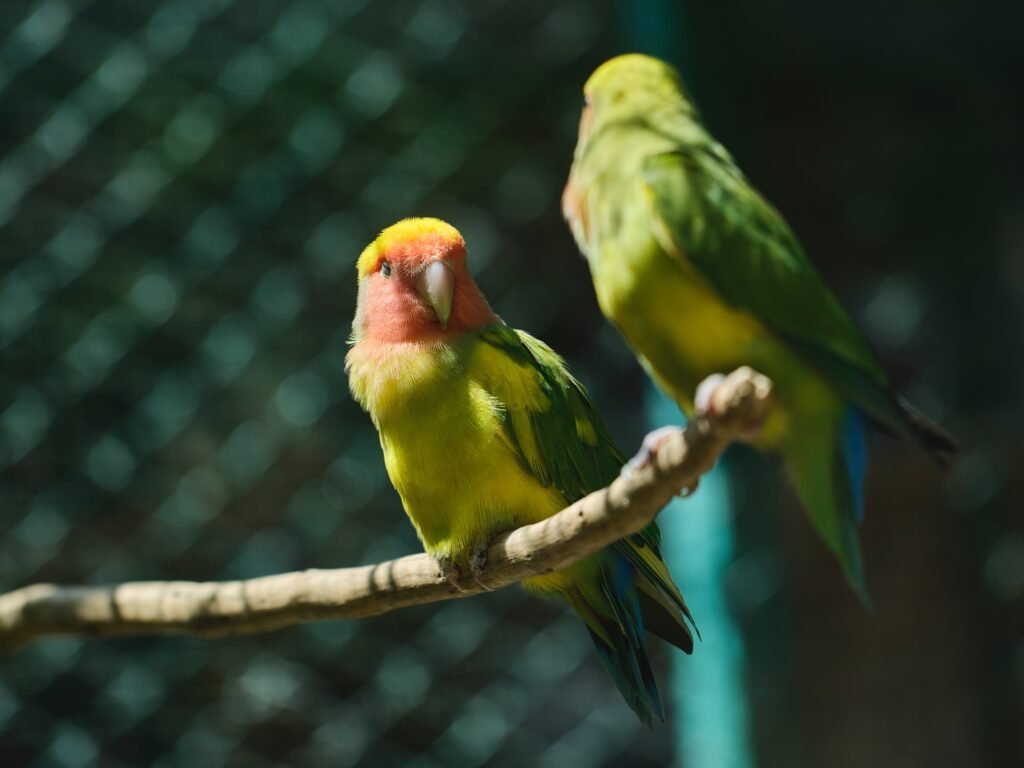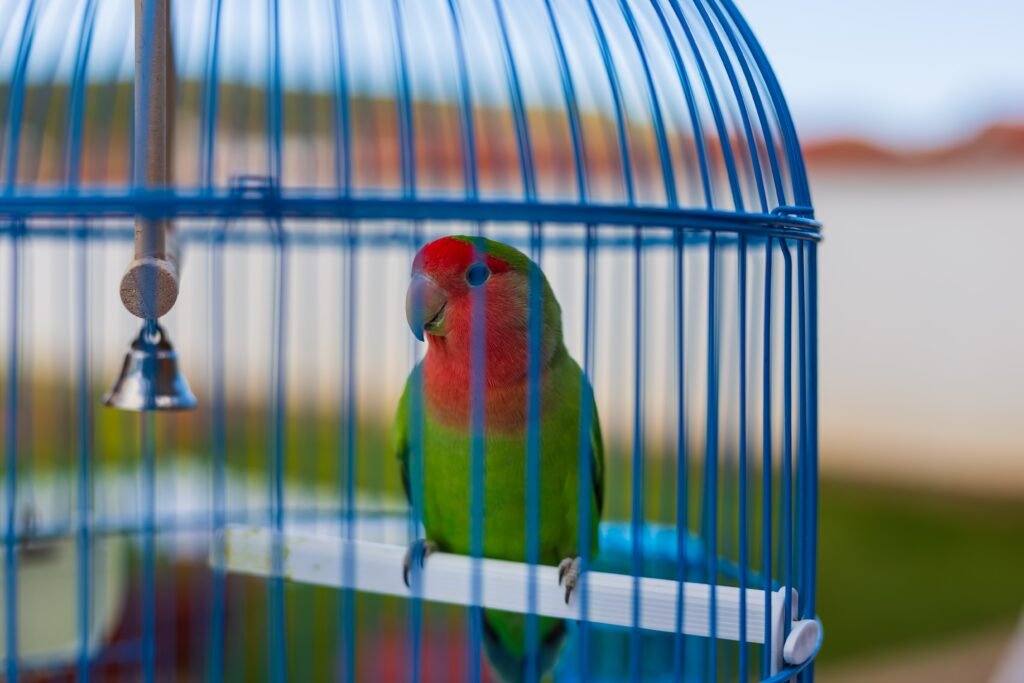
Building trust with your lovebird is essential for creating a strong and harmonious bond. Lovebirds are intelligent and social creatures that require time, patience, and consistency to develop trust. This article will explore tips and techniques to help you gain your lovebird’s trust.
Understanding Lovebirds
Lovebirds are small parrots known for their vibrant plumage and affectionate nature. They form strong pair bonds and thrive on companionship. Lovebirds are highly social and require mental stimulation and interaction to maintain their well-being.
To understand your lovebird better, observing their behavior and learning about their natural instincts is important. Here are some key aspects to consider:
- Body Language: Pay attention to your lovebird’s body language, which can give you valuable insights into their feelings and emotions. A relaxed lovebird will stand tall, fluff their feathers, and have bright eyes. On the other hand, aggressive behavior, such as biting or wing flapping, may indicate fear or discomfort.
- Vocalization: Lovebirds communicate through various vocalizations, including chirping, whistling, and mimicking sounds. You can better respond to their needs and emotions by listening to and understanding their vocal cues.
- Natural Behaviors: Lovebirds engage in natural behaviors such as preening, beak grinding, and wing fluttering. These behaviors indicate a sense of comfort and contentment. You can help your lovebird feel secure and build trust by providing opportunities for these activities.
Creating a Safe and Comfortable Environment
To begin the trust-building journey, providing your lovebird with a safe and comfortable environment is crucial. Here are some key considerations:
- Cage: Ensure the cage is spacious enough for your lovebird to move freely. It should be equipped with appropriate perches, toys, and accessories to keep them engaged and mentally stimulated. Place the cage in a quiet area, away from excessive noise and direct sunlight.
- Toys and Enrichment: Lovebirds are intelligent and curious creatures that thrive on mental stimulation. Provide a variety of toys, such as puzzle toys, chew toys, and swings, to keep your lovebird entertained and engaged. Rotate the toys regularly to prevent boredom.
- Proper Nutrition: A well-balanced diet is crucial for your lovebird’s overall health and well-being. Offer a combination of high-quality bird pellets, fresh vegetables, fruits, and occasional treats. Consult a veterinarian for specific dietary recommendations based on your lovebird’s age, size, and overall health.
- Hygiene: Maintaining cleanliness in and around the cage is essential to ensure your lovebird’s healthy and germ-free environment. Regularly clean food and water dishes, perches, and toys to prevent bacteria and mold buildup. Provide fresh water daily and change bedding regularly.
Establishing a Routine
Lovebirds thrive on routine and predictability. Establishing a consistent daily routine can help your lovebird feel secure and develop trust. Consider the following:
- Feeding Schedule: Serve meals simultaneously each day to establish a predictable routine. This helps your lovebird anticipate mealtime and feel more secure in their environment.
- Social Interaction: Spend dedicated time with your lovebird daily, engaging in activities such as talking, playing, or training. This one-on-one interaction is crucial for developing trust and strengthening the bond between you and your lovebird.
- Bedtime Routine: Set a routine to ensure your lovebird gets enough rest and feels secure. Cover the cage partially or fully to create a dark, quiet sleeping environment. This helps your lovebird maintain a healthy sleep-wake cycle.
Building Trust through Patience and Respect
Building trust takes time and patience. Respecting your lovebird’s boundaries and understanding that trust cannot be forced is essential. Here are some strategies to build trust gradually:
- Approach Slowly: When approaching your lovebird, avoid sudden movements that may startle them. Speak in a calm and soothing voice to help them feel at ease.
- Offer Treats: Use treats as a positive reinforcement tool to associate your presence with something pleasant. Start by offering treats near the cage and gradually progress to hand-feeding once your lovebird is comfortable. This helps build a positive association with your presence.
- Respect Personal Space: Allow your lovebird to leave the cage voluntarily. Never force your bird out or invade their personal space without permission. Respect their boundaries and allow them to explore and interact independently.
- Positive Reinforcement: Praise and reward your lovebird for good behavior. This could be through verbal praise, treats, or a favorite toy. Positive reinforcement encourages your lovebird to engage in desired behaviors and strengthens your bond.
- Training Sessions: In short training sessions with your lovebird, teach them basic commands and tricks. This not only stimulates their mind but also strengthens their bond. Use positive reinforcement techniques, such as clicker training or target training, to make the training sessions enjoyable and rewarding for your lovebird.
Body Language and Communication
Understanding your lovebird’s body language is crucial for effective communication and trust-building. Here are a few key body language cues to be aware of:
- Relaxed Posture: A relaxed lovebird will stand tall, fluff their feathers, and have bright eyes. They may also lean slightly forward and have a relaxed stance.
- Feather Preening: Your lovebird grooming its feathers indicates a sense of comfort and security. It is a natural behavior that helps them maintain the condition of their plumage.
- Wing Fluttering: Wing fluttering can be a sign of excitement or contentment. Lovebirds may flutter their wings when they are happy or anticipating something enjoyable.
- Beak Grinding: Lovebirds grind their beaks to express relaxation and contentment. This soothing behavior helps them relieve stress and maintain their beak health.
- Biting or Aggression: Your lovebird’s aggressive behavior may signify fear or discomfort. Respect their boundaries and give them space. Avoid punishing or scolding them, as it can erode trust and worsen the situation. Instead, assess the underlying cause of their behavior and address it accordingly.

Socializing with Your Lovebird
Social interaction plays a vital role in building trust and strengthening the bond with your lovebird. Here are some suggestions for meaningful socialization:
- Talking and Singing: Spend time talking or singing to your lovebird. This helps them recognize your voice and feel more comfortable around you. Choose calming and soothing tones to create a pleasant environment.
- Shoulder Time: Allow your lovebird to perch on your shoulder while you engage in daily activities. This allows them to observe and feel included in your daily routine. However, ensure their safety by avoiding potential hazards and closely monitoring them.
- Playtime and Enrichment: Engage in interactive play sessions using toys, swings, or puzzles with your lovebird. This will stimulate their mind and promote a positive association with you. Rotate the toys regularly to keep the playtime sessions interesting.
- Flight Time: If your lovebird is comfortable with free flight, create a secure and supervised environment to explore and exercise their wings. This allows them to engage in natural behaviors and promotes physical and mental well-being.
Consistency and Long-Term Care
Finally, building trust with your lovebird requires a long-term commitment. Consistency is key to creating a lasting bond. Remember:
- Be Patient: Trust takes time to develop, so be patient and understanding throughout the process. Respect your lovebird’s pace and avoid rushing the trust-building journey.
- Avoid Punishment: Never resort to punishment or harsh corrective methods. This can damage the trust you have established and negatively impact your lovebird’s well-being. Instead, focus on positive reinforcement and reward-based training.
- Regular Vet Check-ups: Schedule regular visits with an avian veterinarian to ensure your lovebird’s health and well-being. Regular check-ups, vaccinations, and parasite prevention are essential for maintaining their overall health.
- Maintain a Loving Environment: Continue providing your lovebird with a loving, caring, and enriching daily environment. This includes providing fresh food and water, regular cage cleaning, and mental stimulation through interactive toys and activities.
Following these tips and techniques can gradually gain your lovebird’s trust and build a rewarding relationship. Remember, each lovebird is unique, so adjust your approach accordingly. You will enjoy a deep bond with your beloved feathered friend with time, patience, and consistent effort.
FAQ
1. How can I create a safe and comfortable environment for my lovebird?
To create a safe and comfortable environment for your lovebird:
- Ensure the cage is spacious enough for them to move around freely.
- Provide appropriate perches, toys, and accessories for mental stimulation.
- Place the cage in a quiet area away from excessive noise and direct sunlight.
- Maintain cleanliness by regularly cleaning food and water dishes, perches, and toys.
2. What is the importance of establishing a routine for my lovebird?
Establishing a routine is important for your lovebird as it helps them feel secure and develop trust. Serve meals simultaneously each day to establish a predictable feeding schedule. Spend dedicated time with your lovebird every day for social interaction. Set a regular bedtime routine to ensure they get enough rest.
3. How can I build trust with my lovebird?
Building trust with your lovebird takes time and patience. Approach your lovebird slowly and speak in a calm and soothing voice. Use treats as positive reinforcement and respect their personal space. Praise and reward them for good behavior. Engage in short training sessions with positive reinforcement techniques.
4. How can I understand my lovebird’s body language and communicate effectively?
Understanding your lovebird’s body language is crucial for effective communication and trust-building. A relaxed posture, feather preening, wing fluttering, and beak grinding indicate comfort and contentment. Biting or aggression may be a sign of fear or discomfort. Observe their body language and adjust your approach accordingly.


